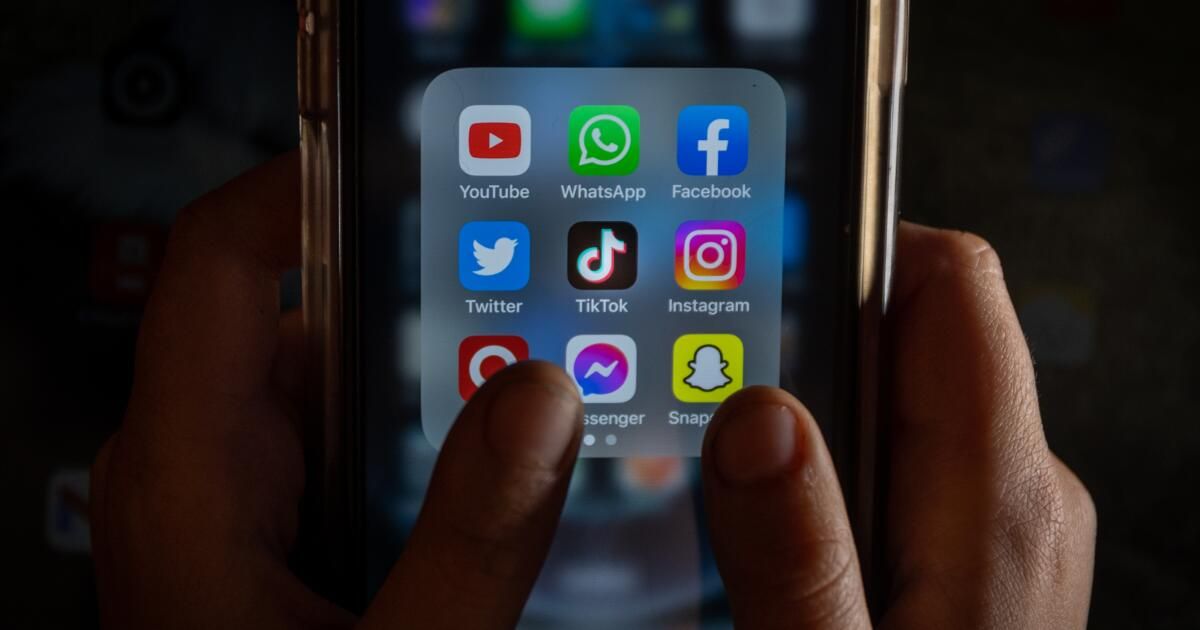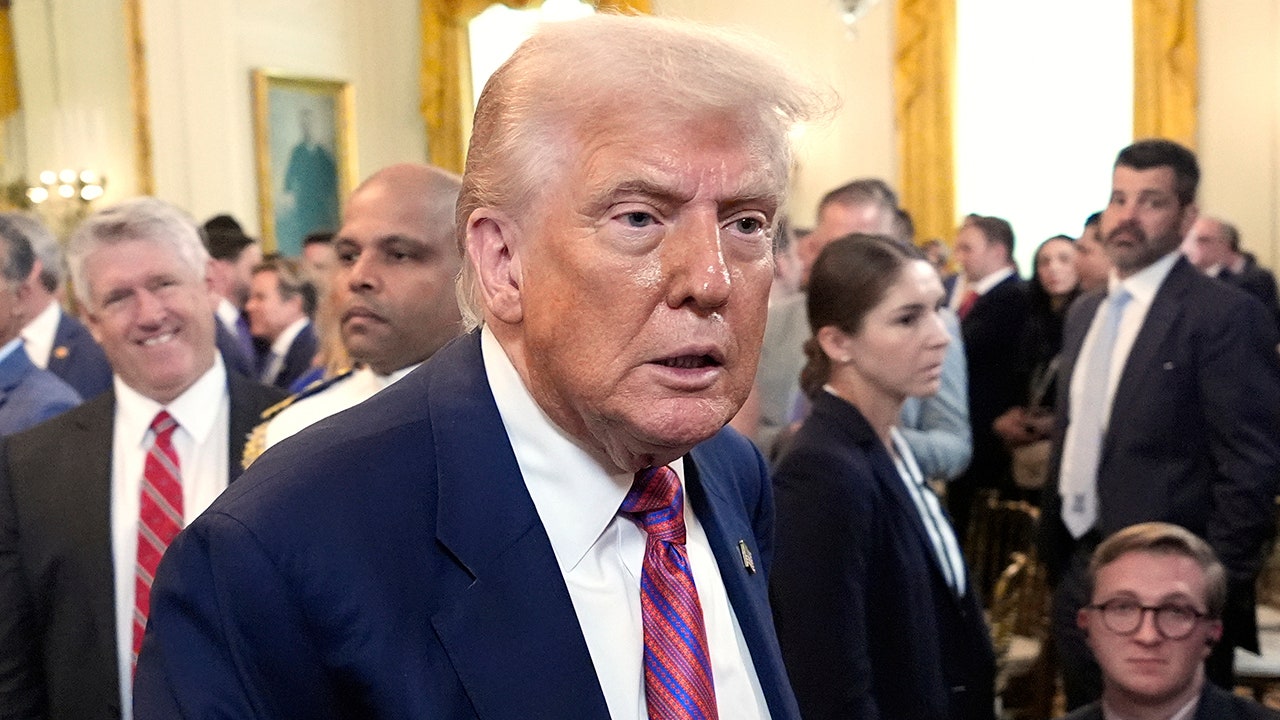On Tuesday, Los Angeles school officials, fed up with kids distracted by social media and worried about abuses like cyberbullying, are set to join a growing number of school systems across the country that are banning cellphone use. during the school day.
The hope is that a ban will lead to better learning, less bullying, distraction and anxiety.— and more meaningful communication with peers and adults.
Some parents, however, want their children to have cellphones for safety and communication, and school administrators say the ban could be difficult to enforce.
The proposal was spearheaded by Nick Melvoin, a board member of the Los Angeles Unified School District.
“It's been something I've been thinking about for years as I walked around campuses and saw kids on their phones and in class with their AirPods on,” Melvoin said.
Co-sponsors of the resolution are Board President Jackie Goldberg and Board Member Tanya Ortiz Franklin. A fourth vote is required to approve the measure in the seven-member body.
The resolution would not immediately put the ban into effect. It directs staff to “develop and present to the public” policies that would ban cell phone and social media use by students “during the entire school day.” including lunch and breaks. Input would be sought from “experts in the field, labor partners, staff, students and parents,” and details would be sent to the school board for approval within 120 days.
Elements to work on include different approaches for different age groups and a variety of technologies, such as smartwatches.
Options being considered include providing cell phone lockers or bags that keep devices locked and inaccessible until they are bumped against a magnetic device while leaving campus. The technology could also be used to block access to social media platforms.
“More and more kids are getting phones at younger ages,” Melvoin said. “They are bringing them to campus. And then I don't remember so many drug sales over the phone. Or coordinate fights or some cyberbullying.” Key evidence in confidential expulsion hearings sometimes includes text messages from students, she said.
The policy would take effect in January 2025.
The largest employee unions did not offer an immediate reaction to the proposal when contacted last week.
One primary school principal said the policy would be excessive and would result in unnecessary work. He said about 25% of his students have smartphones, but they are a problem for fewer than 10; These can be dealt with on a case-by-case basis. The director did not speak to attribute anything because he was not authorized to be interviewed.
Another elementary principal noted in the Facebook group Parents Supporting Teachers that she does not “see a need for our young students to have Apple watches and cell phones. Now, as a parent of an LAUSD high school student who sometimes walks home, I DO see the need. It's a security issue. All in all, I think they cause a lot of unnecessary drama on campuses, but I need my high school student to have theirs.”
AnneMarie Fulton noted in the Facebook group that her daughter will start high school “10 miles from our house. I don't want her to not have access to call me if necessary. “I'm strict about phone use anyway, but taking away that ability to contact a child doesn't exactly seem right.”
There are also parents and employees who support the proposal.
District high school teacher Terri Derrickson Barraza wrote in a social media post that “I would love to see some type of cell phone ban BUT ONLY if the district supports the ban with logical consequences. “If we pass a baseless ban simply for public relations reasons, that only makes my job more difficult.”
The resolution does not specify a penalty, but the most obvious response to a violation would be confiscation of the phone for a period of time deemed appropriate.
Although Melvoin acknowledges that his own observations about the harms of cell phones are anecdotal, the board's resolution cites research consistent with the proposed policy.
The resolution cites a national survey on drug use and health conducted by the Substance Abuse and Mental Health Services Administration that found that among those born after 1995, anxiety increased 139% from 2010 to 2020, coinciding with the rise of smartphones and social media.
The researchers point out that a correlation between two trends does not mean that one caused the other.
Additionally, the US Surgeon General wrote in a 2023 advisory that social media may be linked to a growing mental health crisis among teenagers.
The resolution also cites a report from the US Centers for Disease Control and Prevention that 16% of US high school students in 2021 said they were bullied through text messages or social networks during the previous year.
While social media provides a convenient platform for bullying, it's hard to say how much a ban on cell phones during school days would change that, since the devices would be available at other times.
Important to the district's goals are long-standing lessons on “digital citizenship” at all grade levels. All students who are provided online access are required to participate in an Internet safety educational program.
Additionally, the current policy states that “approved social media should be used at school for educational purposes only and under the direction of a teacher or school leader. “Home use of social media on personal or district electronic devices is limited only to sites approved by the district’s web filtering system.”
The resolution also cites a 2016 Common Sense Media survey that found half of teens feel “addicted” to their phones. A study conducted in 2023 among 200 students in the same group found that 97% of youth ages 11 to 17 used their phones during the school day.
The resolution also states that there is evidence that “limiting cell phone use and access to social media during the school day increases academic performance and has positive effects on students' mental health.”
Districts and schools across the country have adopted policies restricting students' smartphone use. In 2023, Florida public schools began banning student phone use during instructional time and blocking access to social media on the district's Wi-Fi network. Oklahoma, Kansas, Vermont, Ohio, Louisiana and Pennsylvania have introduced similar laws, according to the resolution.
California Assembly Bill 3216, introduced in February, would require school districts to adopt a policy to limit or prohibit smartphone use by students while at school or under the supervision of a school employee. . The law would go into effect on July 1, 2026.
Misuse of cell phones
Some students use cell phones to organize fights, film them and post the images online. Without access to phones during the day, this misuse could be reduced.
“We're finding that more and more things are organized through Instagram direct messages or text messages during the school day,” Melvoin said.
The April 15 fatal shooting of a Washington Preparatory High School student appears to have been recorded on more than a dozen cellphones. The incident occurred a couple of blocks from the school.
Students also use cell phones to bring accountability to the campus, documenting student walkouts or poorly maintained or locked bathrooms.
One could argue that a new resolution is unnecessary and that the real problem is its implementation. More than three-quarters of the country's school districts, including Los Angeles Unified, already prohibit the use of cell phones for non-academic purposes.
Under existing policy, Los Angeles Unified prohibits “the use of cell phones, pagers, or any electronic signaling devices by students on campus during normal school hours or school activities, excluding lunch time or nutritional breaks for students.
The policy was adopted in 2011, and Melvoin said It needs to be updated.
Per policy, students are permitted to possess telephones, pagers, or electronic signaling devices on campus as long as they remain “off” and are stored in a locker, backpack, purse, pocket, or other location where they are not visible during school hours. normal school or activities.












